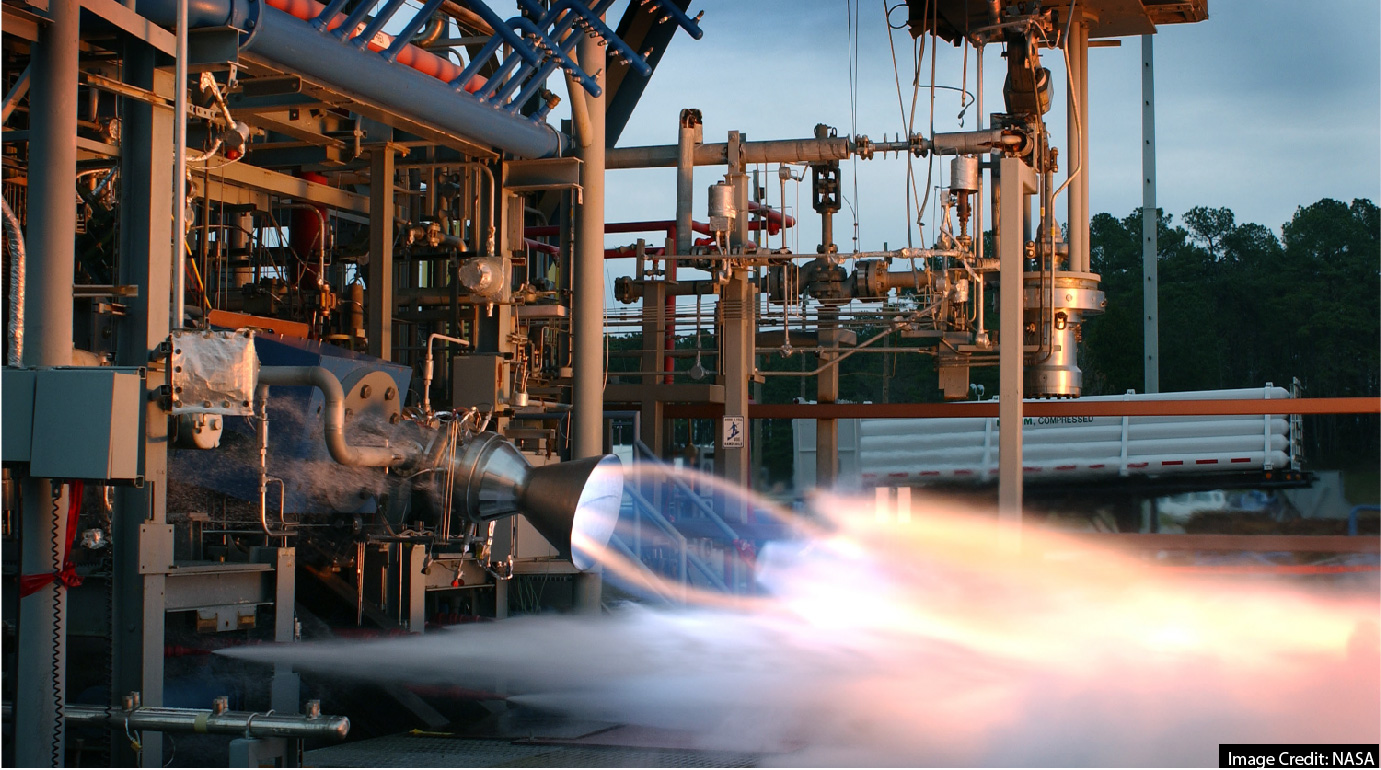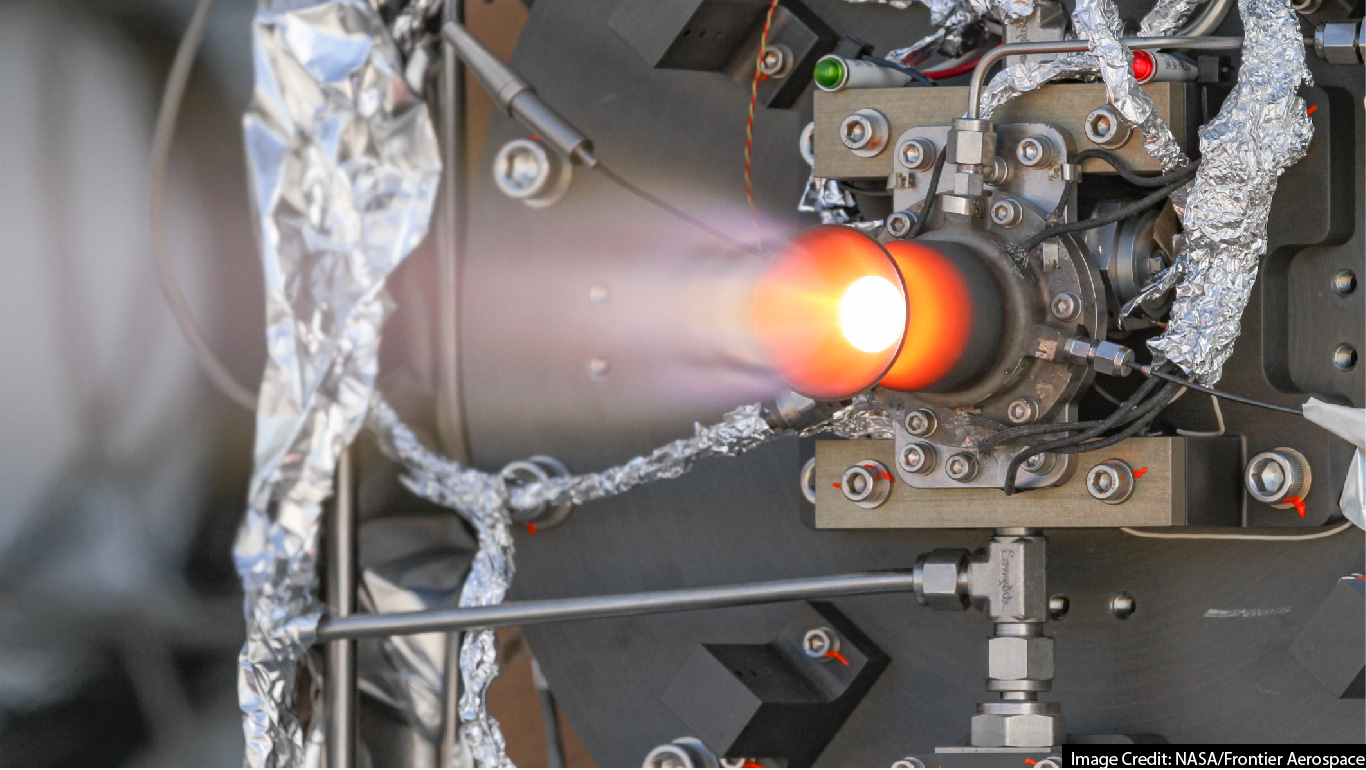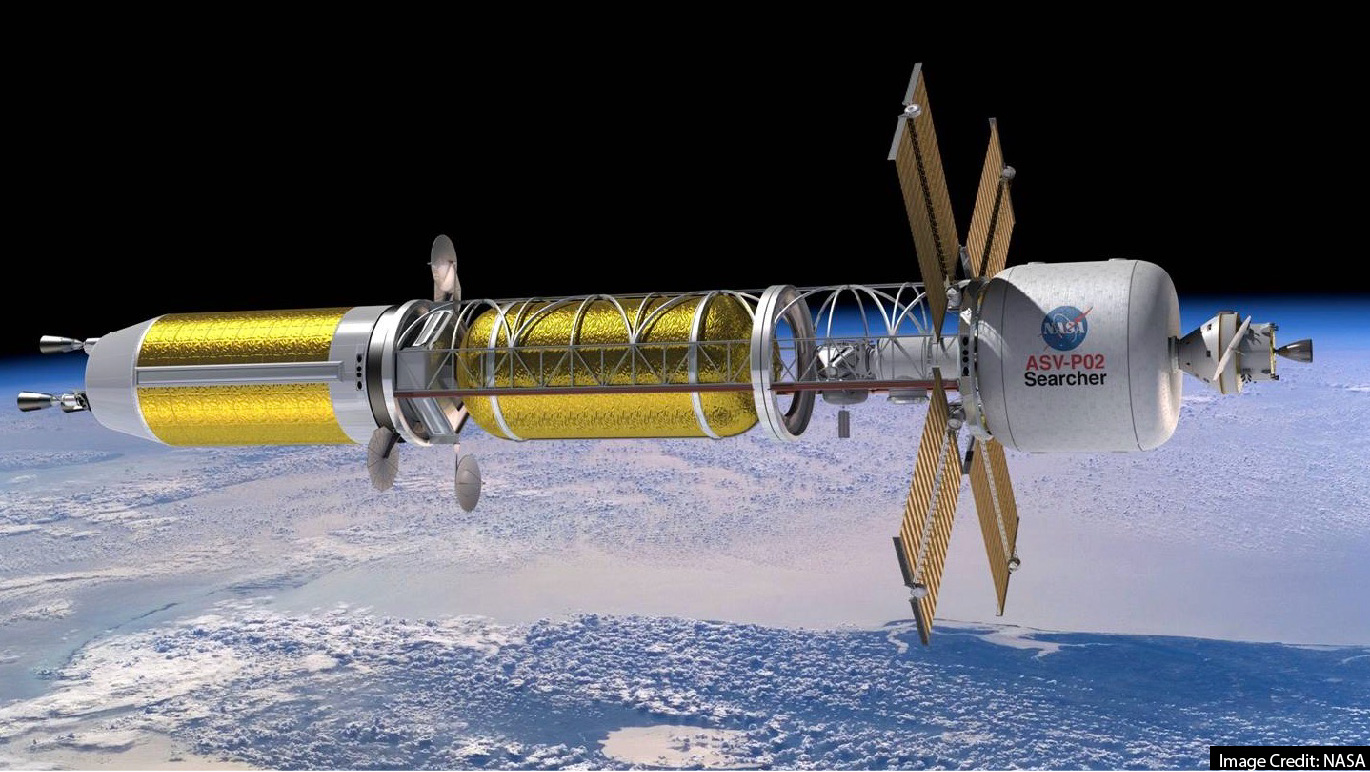Introduction to Propulsion

Key Points
- Propulsion in space serves two major purposes: changing your speed and changing your orientation.
- Missions tend to end when the propellant runs out so mission designers are always looking for ways to get more fuel into their systems and/or be more efficient with what they’ve got.
Introduction
Propulsion is the art of throwing mass away as fast as possible and as efficiently as possible. Spacecraft engineers use propulsion systems both to speed up to get to higher orbits and to slow down to drop to lower orbits. They also use it to twist the spacecraft, but it’s not good at being precise with the twisting, so operators usually use reaction wheels and control moment gyroscopes for fine control movements and use thrusters to support those things.
When you run out of propellants, the good times are over. Your spacecraft will likely start tumbling, especially if you’re orbiting something like Earth. And drag will start pulling at your surfaces, slowing you down until you eventually crash back into the atmosphere. Many systems have to prove to the government they’ll have enough fuel to deorbit their system or raise it to a safe orbit before they run out before they’re granted a launch license.
A Bit More Detail
More temperature and pressure in the flow mean more thrusting power. Most energy comes from heating things to the point they explode. Next are things that spontaneously explode. Then there are things that don’t explode at all, they deflate kind of like a balloon. And, finally, are the electric systems that use ions and electrons to accelerate. This is very efficient, but low thrust.
Chemical Engines
This is a broad category but generally refers to any system that relies on an oxidizer combined with fuel in a combustion process. You can break this category down into subcategories of “things you have to ignite” and “Hypergolics (things that ignite themselves)”.
Ignited Systems

Igniting gases increase the temperatures and pressures you can achieve. Since those are the principal factors that control your thrust levels, most high-performance engines go this route. For instance, the space shuttle used Hydrogen as the fuel and Oxygen as the oxidizer. The SpaceX Falcon 9 uses Kerosene as the fuel. Several companies are designing new rockets that use Methane as fuel. These systems always store the fuel and oxidizer as cryogenic liquids that are expanded into gases through pressure and temperature changes.
Although they’re most often used on launch vehicles, they do occasionally get used on large spacecraft that have the volume and mass to support them. Space stations look at them more seriously because hydrogen and oxygen both create and can be sourced from water, which people need to live. More typically, though, spacecraft designers use Hypergolic systems.
Hypergolics

Hypergolic fuels are so reactive that just touching each other makes them explode. This means you don’t need an ignition system that saves you mass and complexity while lowering the risk of failure. It’s also easier to avoid hard starts that blow things up. And you can store them at easy-to-achieve temperatures and pressures for long periods of time. Around the industry, hypergolics are seen as the most reliable propulsive systems in their energy class.
On the other hand, the properties that make them so reactive also make them toxic. Hydrazine is the most popular hypergolic and several accidents over the years have killed people. (Search for the Nedelin accident for an example.) Because of the regulations around it, there are companies that specialize in fueling spacecraft using long procedures and significant amounts of safety equipment.
Hypergolics have enough thrust to launch a rocket, but designers don’t love how toxic and dangerous they are so avoid them for that purpose. Plus, other fuels like Hydrogen/Oxygen or Methane/Oxygen give you much more thrust for the weight. Where you see them often is on satellite systems, either as the main thruster to control speed or on mini-thrusters to rotate the satellite.
Solid Rocket Motors
These aren’t that much different than Estes model rocket motors. You fill a tube up with a solid mixture that you ignite and it burns until it’s gone. These are used so infrequently on spacecraft that it’s almost not worth mentioning. There have been a few cases of people looking at using them as orbit-boosting motors in the first part of a mission, but that’s about it.
Pressure Systems
These are like having a balloon where you blow it up, release it, and watch it fly around the room. Because this is just one pressurized tank and a couple of valves, this is the most reliable system in any energy class. But its thrusting power is low so that it sees infrequent use on flight systems. Its most frequent use is on CubeSats where volume and mass are critical, or in research projects looking at things like converting ice from asteroids to steam as a replenishable fuel source.
One modern trick is to store a solid fuel that can be heated to release gas that feeds a tank that can be pumped to higher pressures. This adds more complexity but solves a number of problems including gas resupply, liquid fuel sloshing, and shelf stability. Iodine ion engines use an approach similar to this for their fuel as well.
Electric Engines

There are various types (e.g. Ion, Plasma, Hall Effect) and they all operate on the same principle: create positively-charged ions that badly want electrons, put those electrons at the exit, then watch the ions race to it. These tiny atoms zip out of the thruster at tens of kilometers per second, which is much faster than a chemical engine can produce. So there’s not much mass, but it flies very fast so you get overall good performance.
The most popular electric engine uses the Hall Effect approach. Here, a gas like Xenon has electrons stripped off to create a positively-charged Xenon ion. At the exit is an electron gun creating the carrot that gets Xenon to charge forward. To control the direction of the thrust, a magnetic field is created around the chamber so the electrical axis goes down the center. There are variations that use positive and negative electric fields and the electrons are just there to neutralize the plume so it doesn’t try to get back into the chamber or react with surfaces.
It’s not all good, though. Many electric engines suffer from challenges like sputtering. Sputtering is when fast-moving ions collide with the chamber walls and knock off a molecule or two. This molecule gets thrown out of the chamber, sometimes at extreme angles. If you have a solar panel or other sensitive surfaces nearby, (including the thruster itself) it can end up sticking to the surface, significantly degrading its performance. Plus, over time, you erode your thruster chamber until it stops working to the level you need. If you look at pictures of satellites with ion engines, you’ll see designers have taken great care to stick them far from anything the plume could land on.
Additionally, they require hundreds or even thousands of watts to run, which means large solar panels. And all that power gives you fractions of a Newton of thrust. (A hydrazine thruster can produce tens of Newtons for essentially no power.) Missions must turn them on and leave them on for long periods of time to build up the speed they need to go anywhere.
All that being said, electric engines continue to find key roles on spacecraft, and research continues to improve them. Chemical engines are in no danger of being obsolete, but they will likely give up more market share.
Nuclear Engines

What better way to get high temperatures and pressure than nuclear explosions? Just make sure the explosions only shoot flames out the back and you’ll be zipping around the solar system for relatively little mass and power. Other ways to utilize nuclear reactions include heating gases to extreme temperatures then releasing them and/or generating lots of power for ion engines. These ideas are so appealing that people have been studying them for decades.
Unfortunately, the political and technical risk of putting anything nuclear in space has prevented serious effort to implement the ideas. For instance, if you launch the nuclear material and the launch fails and drops the radioactive stuff somewhere sensitive, you could contaminate the area for many years. This is a far-fetched scenario but represents the types of discussions people have had. In fact, NASA has struggled to get the radioactive material it needs for some of its most benign use cases.
Lately, though, people are starting to warm to the idea. It would be useful to many missions to get where they’re going faster and/or to have lots of power available. Organizations like DARPA and NASA are both running projects intended to nudge things forward.
The Other Stuff
More complex than the thrusters are the systems that feed and support them.
Tanks: These can dominate the volumes of spacecraft. Mission designers have to think about things like the center of mass, pressurization so the fuel flows in zero-g, fuel sloshing, and more. Getting a big tank can take years. A popular choice nowadays is Carbon Overwrapped Pressure Vessels (COPV), which give you high pressures for less mass.
Feedlines: The lines from the high-pressure tanks also need to be able to support high-pressure as they route the liquids and gases around to the thrusters. Because they tend to be long and thin, they’re susceptible to damage during launch. Your structural analyst needs to make sure they’re held correctly.
Valves: These allow or stop flow going through feedlines. This is one of the most difficult things to get correct. Even after millions of dollars and decades of research, this is not a solved problem. Consider that Boeing’s Starliner capsule had to be rolled off the launch pad in 2021. And SpaceX blew up a capsule when a valve failed. Many shuttle missions were scrubbed due to bad valves. And spacecraft have failed, too. Do your homework when buying valves.
Gauges: You need to understand the pressure levels in everything else so you can adjust valves.
Thrusters: This is usually a spherical chamber that feeds a nozzle. For spacecraft, you sometimes see them as triads, with three nozzles pointing in the three axes, all fed by the same feedline. Valves control which nozzle is fed.
Summary
Like other spacecraft disciplines, there are people who spend their whole careers learning about and improving on propulsion. This is especially true for rocket engines, but there’s plenty to be done on spacecraft, too. And what’s not to love? You’re playing with huge amounts of energy to try to go fast. Whether you’re igniting fuels, accelerating ions, or even looking at nuclear explosions, there’s something for everyone.
Glossary
These are some terms you’ll often hear when talking about propulsion:
Isp: Short for “Specific Impulse” or, maybe more accurately “Impulse, specific”. This measures how efficient the engine is. It’s like saying how many miles per gallon a car gets. Higher Isp means the engine is more efficient.
Thrust: This is how much force the engine can push on your spacecraft with. Many engines produce a tiny amount of thrust, but they can do so for a long amount of time. Eventually, it builds up to high speeds.
Curated Videos
- https://www.youtube.com/watch?v=LbH1ZDImaI8
Tim Dodd, the Everyday Astronaut, created this awesome engine overview with his team. They’ve since added more videos about specific engines. Well worth the watch if you haven’t already. - https://www.youtube.com/shorts/_MUv28Yf_4g
This video moves quickly through the topic of ion engines. You’re likely to get a lot of your questions answered in less than a minute.
Curated Links
- https://en.wikipedia.org/wiki/Hypergolic_propellant
Wikipedia's entry on hypergolic propellants is pretty good and covers pros and cons with good references. - https://en.wikipedia.org/wiki/Hall-effect_thruster
Wikipedia’s entry on Hall-effect thrusters is a bit dated, but the concepts are all there. - https://orbionspace.com/thruster-configurator/
Orbion has a slick tool that lets you get a feel for what you’d need to fly one of their Hall-effect engines.
 Space Steps
Space Steps